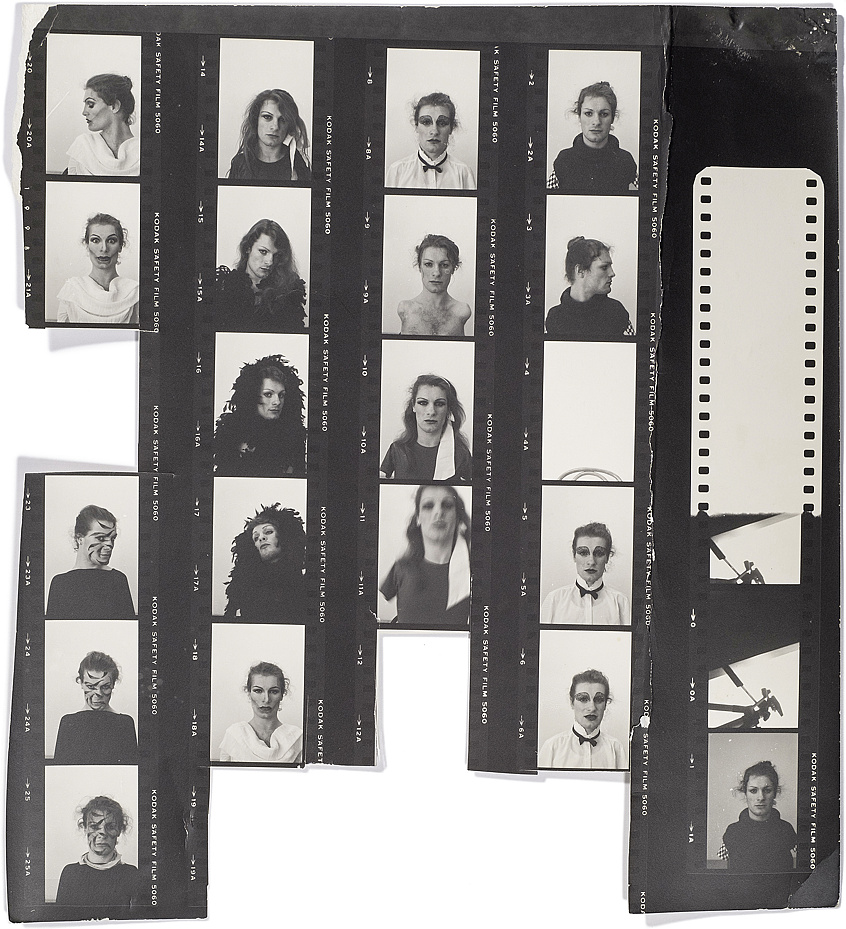Lorenza, originally named Ernst Lorenz Böttner, was born in 1959 into a family of German origin in Punta Arenas, Chile. At the age of eight, s/he received an electric shock after climbing a pylon, as a result of which both arms were amputated below the shoulder. S/he returned to Germany with Lorenz’s mother to have a series of plastic surgery operations. They moved to Lichtenau, a city near Kassel, in 1973. Böttner grew up being considered “disabled,” and suffered the same interment and exclusion as the so-called “Contergan children” who were born with morphological differences from in-uterus effects of the drug thalidomide.
Lorenza refused prosthetic arms, but developed an acute interest for classical ballet, jazz, and tap dancing, and learned to paint with feet and mouth. S/he studied painting at the Kassel School of Art, graduating with a thesis entitled “Behindert?” in which s/he questioned the category of disability, rejected being considered a freak and explored the genealogy of mouth and foot painters. At this point a double process of subjective and artistic self-construction began. First, Lorenz decided to use the name Lorenza, affrming an openly transgender feminine position. Lorenza’s drawings and self-portraits as a woman painted with the feet or mouth, feminine clothes designed for armless bodies, and photographic sequences documenting the process of transformation, functioned as performative technologies for creating an armless-transgender subjectivity. Second, if medical discourse and modes of representation aim to de-sexualize and de-gender the impaired body, Lorenza’s performance work eroticizes the trans-armless body, endowing it with sexual and political potency.
Lorenza transformed the practice of painting into performance art, making the streets a stage for the politicization of bodily difference. In doing so, Lorenza to some extent entered the tradition of mouth and foot painters making a living from painting in public. However, Lorenza’s work subverts this tradition of public painting both through the themes being depicted (self-portraits as a woman nursing a baby, scenes of police brutality) and through the combination of mouth and foot painting with a more conceptual language, informed by contemporary performance art. Thus, for instance, in the Venus de Milo performance (first performed in Kassel, but later taken to New York and San Francisco), Lorenza’s dissident transgender body becomes a living political sculpture, a trans-armless sculptural manifesto. Surpassing both the male narcissistic position of dripping painting and the feminist tradition of public performance, Lorenza painted while dancing on a piece of paper or on a canvas spread over the street floor, claiming the right to exist and create in a transgender armless body. Böttner travelled extensively doing hundreds of street performance paintings.
S/he was affliated with the Disabled Artists Network, making contact with artists like Sandra Aronson and defending the existence of a mouth-and-foot-art that demands to be recognized by art history and institutions. S/he actively opposed the processes of de-subjectification, mentoring, incapacitation, internment, de-sexualization and castration which modern normalizing societies reserve for the bodily other. In 1988, Lorenza moved to Barcelona and, in 1992, became the living embodiment of Petra, the controversial Paralympic mascot designed by Mariscal. S/he died in 1994 from HIV-related complications.



